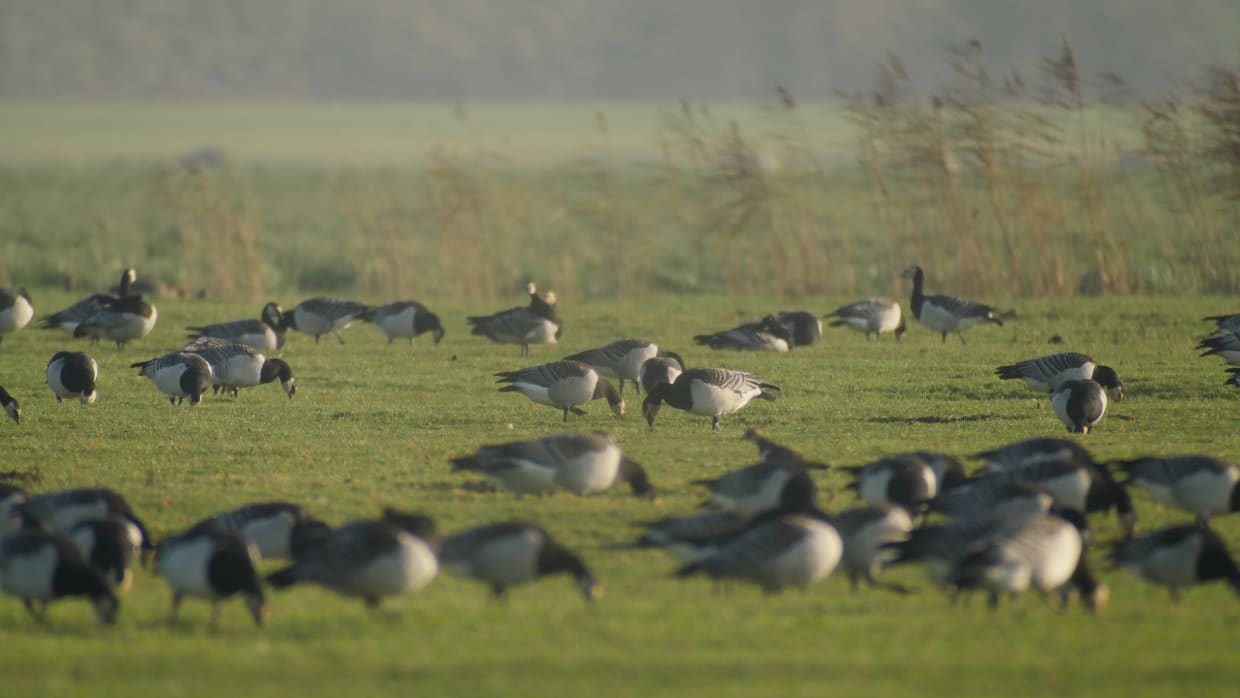
Geese are eating grasslands bare: Should we drive them away or tolerate them?
The goose is doing well; most species have increased in recent years. This is not such good news for farmers because geese are eating the grasslands. This is what PhD student Nelleke Buitendijk studied. “When you focus on driving them away, the geese leave for a neighboring country. All you do is move the problem.”
While researchers in the 1950s were pleased to report finding a flock of 100 barnacle geese, for goose scientist Nelleke Buitendijk, flocks of 1,000 geese are now no exception.
“A conservation success story,” said Buitendijk, who will receive her doctorate on Friday from the University of Amsterdam and the Netherlands Institute of Ecology (NIOO-KNAW). For farmers, it’s not such good news. With the increase in farmland, wild birds are grazing more and more in farmers’ pastures.
Have geese become a plague?
“In Europe, it’s not all that bad. But in North America, with numbers of 14 million, you could call snow geese a plague. This is because the geese are altering the entire tundra and having a negative effect on other animals living there. By comparison, the barnacle geese population - with less than 1.5 million barnacle geese the largest species of geese in Europe - are not so numerous. Still, we need to keep an eye on what effect those geese have.

You followed and observed 70 tagged barnacle geese in Friesland. What effect are the geese having there?
“The geese graze on farmland, reducing the farmer’s harvest. In my study, I focused on grasslands in Friesland with the question: How can we reduce damage from geese without harming the goose population?”
Does the research question arise from farmers seeing their agricultural yields decline?
“In part. Farmers receive compensation payments for lost crops from the government. That damage has increased significantly in recent years, so it’s also costing the government a lot of money. So the question is also coming from the government. One of the big questions was whether the damage increases linearly with the number of geese. Studies from the 1980s did not reach a definitive conclusion about that.”
Surely you would expect that more geese mean more damage?
“That does not appear to be the case, at least not linearly. The amount of damage increases with the number of geese, but per goose, the damage decreases.”
How is that possible?
“We don’t know exactly. But the most plausible explanation lies in how geese use their energy. Geese forage on land during the day and rest on water at night. So the most popular fields are near the water because the shorter the travel time, the less energy the geese expend and the less they eat. Therefore that is where you find the largest flocks of geese. Geese may also choose fields with the best food and where they can obtain the most energy. So the more geese use a field, the less grass one goose eats.”
How does this result translate into policy?
“One way to reduce damage by geese is to drive them away. This can be done by walking into the field, shining a laser, or shooting towards the geese. But how effective is it to drive them away? For that, we did a goose simulation. We simulated in a model what would happen if flocks of 1,000 geese forage in Friesland every day. We varied the size of the refuge areas and the extent to which we drove them away. The model showed that if you have to hire people to drive the geese away, the costs go up significantly, so much so that it is out of proportion to the yield loss saved by the farmer. So the most cost-effective option is either not to drive away the geese at all, or to choose very specific small areas and drive them away intensively there, such as near newly sown grass or airports, where there is a risk of flyovers.”
What impact does it have on the geese when they are driven away?
“When the displacement areas become too large and the refuge areas too small, the geese don’t get enough food. In the model, they then die, but in reality, they go to a neighboring country. Then you just move the problem. After all, geese are migratory birds and also graze on farmland in other countries in Europe. That is why research is being done at the international level.
Do farmers understand the results of the research?
“The farmers are involved in the goose policy for each province and are very interested, something I noticed from my contact with the farmers of the fields where I did research. I also presented my research results several times to the province and the farmers and people had the opportunity to provide feedback. That way the farmers were not presented with a fait accompli and the process was transparent.”
Nelleke Buitendijk is scheduled to receive her doctorate on Friday, 2 June at 11 a.m. for her dissertation “Grazing Grasslands - Managing the Impact of Geese on Agricultural Grassland.” The defense will take place in the Aula (Oude Lutherse Kerk) and attendance is free.

